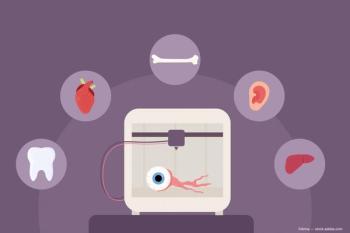
- Ophthalmology Times: April 1, 2020
- Volume 45
- Issue 6
3D cataract surgery: Keeping the eye in focus
Convenience, ergonomics, and education are proving to be important factors in budding technology that may help surgeons extend their careers.
This article was reviewed by Ashley R. Brissettte, MD, MSc, FRCSC
While 3D surgery has become a staple in retinal procedures, it has yet to become prevalent in anterior segment surgery. This may change as surgeons become aware of the benefits a 3D system offers.
According to Ashley R. Brissette, MD, MSc, FRCSC, the degree of visualization through the surgical microscope is quite good, which could prove to be beneficial for physicians as they perform challenging procedures.
Related:
“I think that there are other benefits to 3D surgery that will become readily apparent over time,” said Dr. Brissette, assistant professor of ophthalmology, Weill Corneal Medicine and New York Presbyterian Hospital, New York.
A number of factors come into play in the quest for ideal intraoperative visualization when using a surgical microscope. Dr. Brissette pointed out that during
Ergonomics are important to Dr. Brissette. The careers of many ophthalmologists are truncated by back and neck pain caused by extended periods of surgery and examinations over the years.
Related:
3D technology
The Zeiss system is one of integrated digital optics, featuring intraoperative optical coherence tomography for corneal surgery and will be introducing digital overlays for toric alignment in
Dr. Brissette noted that the new technology offers exciting options for ophthalmologists.
“The three unique advantages of 3D technology are visualization, ergonomics, and education,” she said. “The last has become especially important in anterior segment surgery using the 3D heads-up systems.”
Related:
The improvements in visualization seen with 3D technology result from the increased quality of vision to the total operating space and offers high-definition resolution intraoperatively from the nasal to the lateral canthi.
This eliminates looking into the microscope and the frequent adjustments needed to obtain clear focus; the entire field is in focus, she emphasized.
Dr. Brissette provided an example of how well 3D technology makes surgery easier. In a patient who is a high myope undergoing
Related: Improving outcomes of cataract surgery
Because of 3D technology, there is no need to adjust the focus intraoperatively to visualize the angle during microinvasive glaucoma procedures and for corneal and conjunctival procedures.
Conclusion
Using 3D systems, surgeons can sit back in the chair and maintain a comfortable position during longer cases and days in the operating room.
“This feature will help to maintain career longevity,” she said.
Related:
Education likely is one of the most important benefits of 3D systems. In complicated cases, personnel from different ophthalmic disciplines as well as residents and fellows can view the surgery simultaneously. Nurses viewing the procedures can anticipate the needs of the surgeons intraoperatively.
No refocusing of the field of view is needed as the various surgeons move in and out of the primary position or for teaching opportunities. Surgical skills can be improved by reviewing cases in 3D with residents and fellows.
“The educational component is becoming more and more important with the education of the next generation of ophthalmologists,” Dr. Brissette noted.
Ashley R. Brissette, MD, MSc, FRCSC
E: [email protected]
Dr. Brissette is a consultant/advisor to Alcon Laboratories, Bruder Healthcare Company, Carl Zeiss Meditec, and Eyevance Pharmaceuticals and has received grant support from Alcon Laboratories.
Articles in this issue
over 5 years ago
Researchers eye cure, diagnostics for adenoviral conjunctivitisNewsletter
Don’t miss out—get Ophthalmology Times updates on the latest clinical advancements and expert interviews, straight to your inbox.














































.png)


